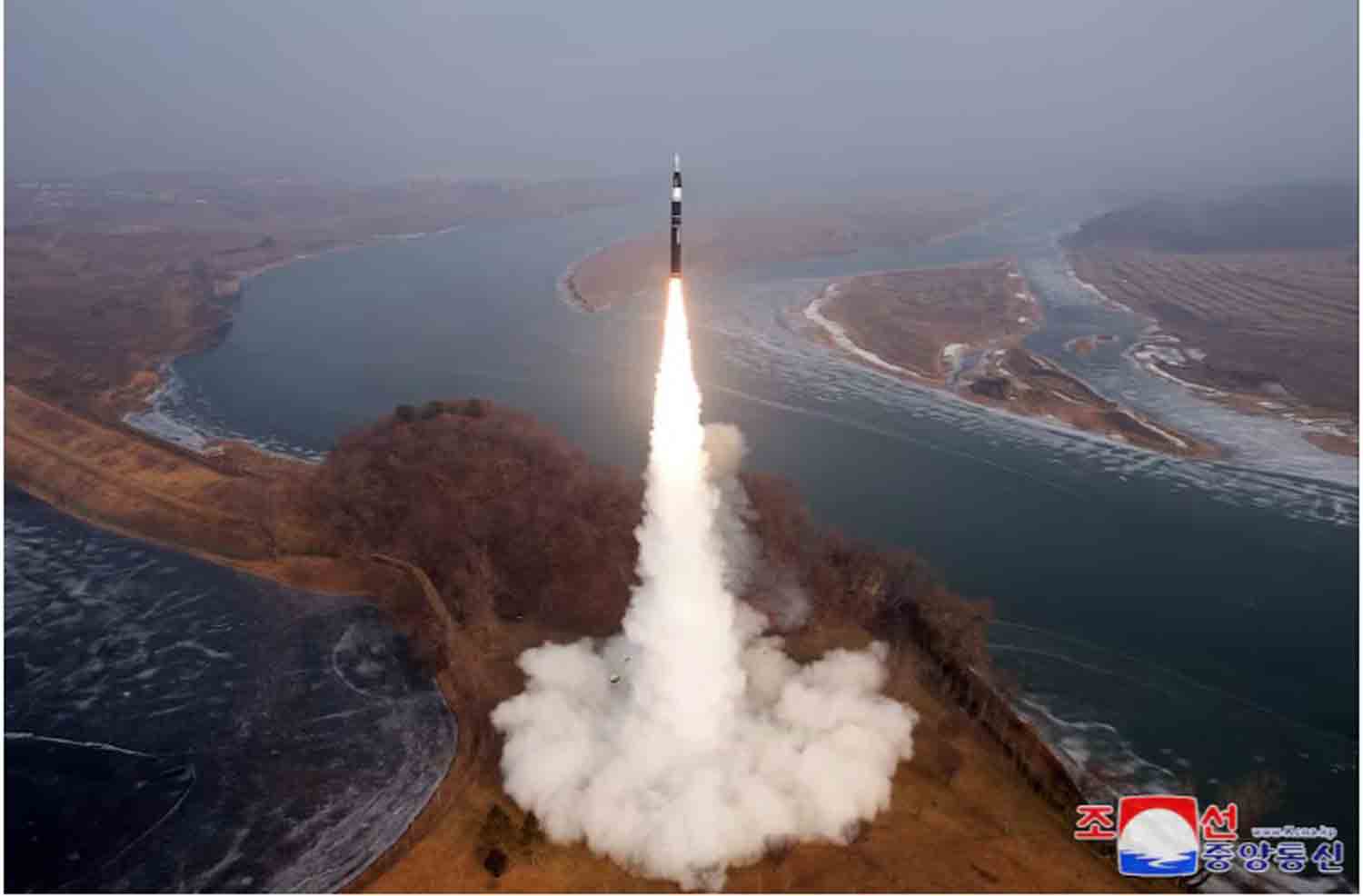North Korean leader Kim Jong Un supervised a successful test of a new intermediate-range hypersonic ballistic missile (IRBM) on Monday, as reported by state media KCNA on Tuesday. He committed to enhancing the nation’s nuclear and missile capabilities.
This launch marked North Korea‘s first missile test since November 5 and coincided with U.S. Secretary of State Antony Blinken’s visit to South Korea, where he emphasized the importance of bilateral and trilateral cooperation with Japan to address the increasing military threats from Pyongyang.
The missile was launched from the outskirts of Pyongyang, traveling approximately 1,500 km (932 miles) at speeds reaching 12 times the speed of sound. It ascended to nearly 100 km before descending to a “second peak” of 42.5 km and maneuvering accurately to hit a target off the east coast, according to KCNA.
However, South Korea’s military suggested that the KCNA’s claims may be overstated, estimating the missile’s range to be around 1,100 km and noting that no second peak was detected. They indicated that a thorough analysis would be conducted in collaboration with the United States. The mention of a “second peak” would suggest the missile’s ability to alter its course and maintain altitude rather than following a traditional ballistic path.
KCNA also reported that new carbon fiber composite materials were utilized in the missile’s engine section. These materials are lighter and stronger than traditional aerospace materials like aluminum, although they are more challenging to produce. The agency claimed that the missile could “effectively penetrate any dense defense barrier and deliver a significant military strike against adversaries.”
Kim praised the missile as a formidable tool against security threats from adversarial forces and the evolving regional landscape. KCNA published images of Kim overseeing the launch through teleconference with his young daughter, alongside a missile taking off from a launch site. “The advancement of the new-type hypersonic missile is primarily intended to enhance the country’s nuclear deterrent capabilities,” he stated, as reported by KCNA.
U.S. Secretary of State Blinken and South Korean Foreign Minister Cho Tae-yul both condemned the missile launch, expressing concerns over North Korea’s growing connections with Moscow, particularly regarding illicit collaboration in space and satellite technology. North Korea is actively developing a new solid-fuel intermediate-range ballistic missile (IRBM) amid a competitive push for next-generation long-range rockets that are challenging to detect and intercept. Last year’s tests showcased a new solid-fuel design and included what Pyongyang claimed was a hypersonic glide vehicle, a warhead engineered to maneuver and evade missile defense systems. Lee Sung-jun, a spokesperson for South Korea’s military, indicated that the recent launch seemed to be a continuation of last year’s testing efforts.
Discover more from Defence Talks | Defense News Hub, Military Updates, Security Insights
Subscribe to get the latest posts sent to your email.





